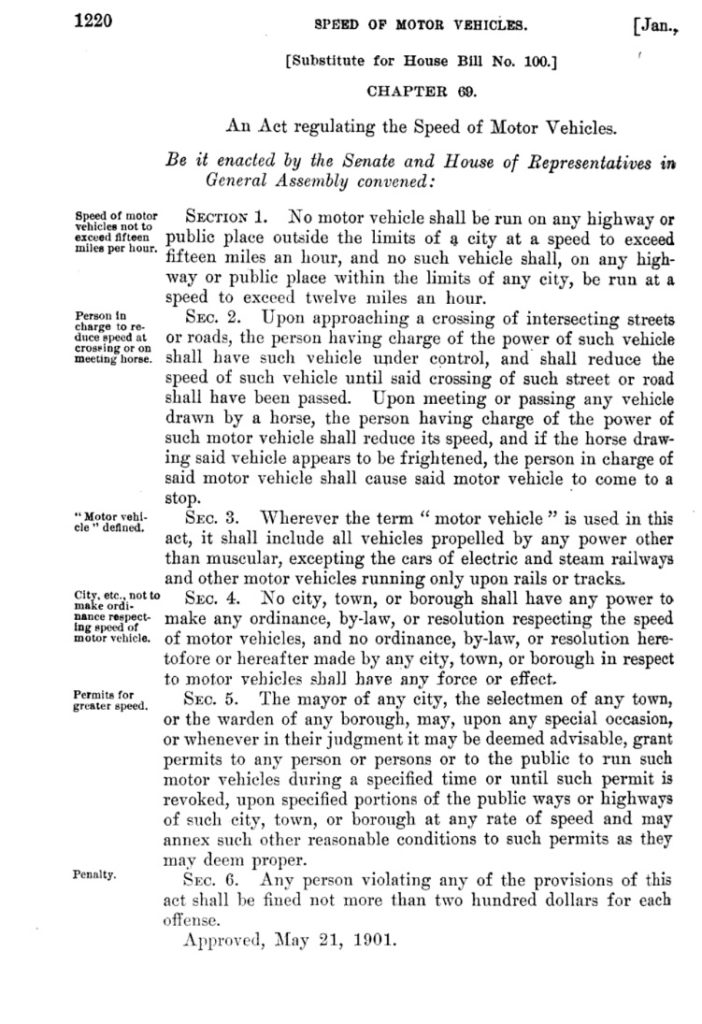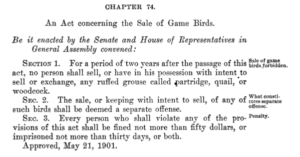Skip drinks because it’s: The Speed Limit
You there, do you know how fast you were going?
Ask it about: Can it drive 55?
Most of us like to think that history is a parade of accomplishments, but when you get down to it somebody has to invent the everyday stuff, too – and as much as it pains me to say so, my home state has done more than most in making the world a duller place. Go ahead and thank Connecticut, pioneer of the boring, for we have given you: wooden nutmeg scandals, government paperwork, car taxes, the insurance industry, and the nation’s first law school.
And as if that weren’t enough, in 1901, my home state was first in the country to set a speed limit for motor vehicles.
No city driving over 12 MPH, now. In the burbs, you can punch it up to 15.
First there were horse-drawn carriages, and then there were cars. The simplicity of that statement makes it very tempting to think that the changeover was equally tidy – that one day everyone just trotted their horses to the dealer, got zero down and no APR for a trade-in on that chestnut mare, and drove out into the future.
In truth, the transition to car culture took decades. Prior to the motor vehicle era, streets were multi-purpose public spaces: a mix of horses, carriages, streetcars, pedestrians, kids at play and people conducting business, all with a side order of horse doo. To get an idea of what a city street looked like at the turn of the 20th century, take a look at 23rd Street in New York, circa 1901:
Please excuse the scandalous glimpse of ankle flesh.
Cars introduced a new and disruptive variable into public roads, and since most cars in 1901 look like a pram humped a lawn mower, they were very likely both to distract people and spook horses. The Connecticut law is written to control the structure and civility of road space, and it isn’t messing around: the statute carries a two hundred dollar fine – over $5,000 in modern equivalent – because if you can afford a car, moneybags, you can slow your roll or pony up (literally).
Fun Facts:
Connecticut isn’t all bad news. We make up for it with Pez, hamburgers, apizza, football, birch beer, submarines and Mark Twain.
And look, stop giving us crap about the nutmegs. ALL NUTMEGS ARE WOODEN. Buy a damn spice grater.
My husband’s right: people just seem to be driving faster.
Also in the 1901 CT statutes, you could get nailed for possession with intent to sell. (Quail.)
(This is because the 1900 federal Lacey Act, which protected wildlife from exploitation, operated by enforcing underlying state laws. Overhunting was a serious problem in the early 20th century: “In 1901, for example, 48 men in Illinois were charged under the new law for illegally shipping more than 22,000 quail, grouse, and ducks into the state. In New York, enforcement officers recovered more than 40,000 illegally traded game birds from a cold storage facility in Brooklyn.”)
A federal speed limit was instituted in 1974 as a result of the OPEC oil embargo. It was repealed in 1995, returning responsibility to the states.
Additional Reading:
David Mao, “Justifying Speed,” In Custodia Legis, December 7, 2012
J.R. Spencer, “Motor-Cars and the Rule in Rylands v. Fletcher: A Chapter of Accidents in the History of Law and Motoring,” The Cambridge Law Journal, Vol. 42, No. 1 (Apr., 1983)
Brandon Keim, “Did Cars Save Our Cities From Horses?,” Nautilus, November 7, 2013
Sam Dean, “The History of the Car Cup Holder,” Bon Appetit, February 18, 2013


